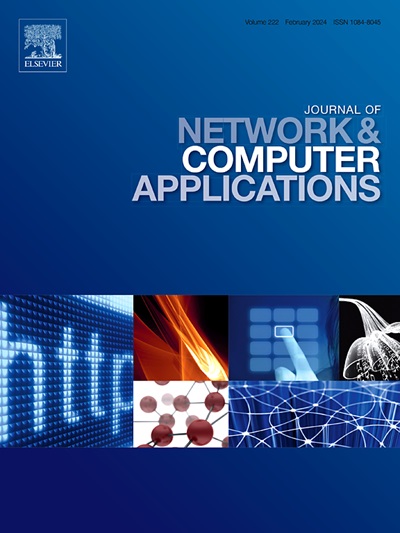Security and privacy of industrial big data: Motivation, opportunities, and challenges
IF 7.7
2区 计算机科学
Q1 COMPUTER SCIENCE, HARDWARE & ARCHITECTURE
引用次数: 0
Abstract
With the rapid growth of the Industrial Internet of Things (IIoT), an abundance of data is generated, and various data acquisition, analytics, and storage mechanisms are developed intelligently for smart industrial productions. Big heterogeneous data of IIoT suffers from security and privacy issues, which are the main hurdles for smooth industrial operations and pose a serious concern to the widespread adoption of IIoT. The existing studies suffer from security loopholes and privacy-preserved solutions for industrial data in a distributed environment. However, emerging technologies like Blockchain, Federated Learning (FL), and Sixth Generation (6G) are potential candidates to provide reliability, security, and privacy in IIoT networks. The blockchain offers the temper proof of security due to its distributive absolute nature. The FL does not share data with the centralized system for training purposes, which ensures data privacy. Finally, 6G communication is used for faster data acquisition and low latency in the mobility-based distributed nature of industrial big data.
In this survey, we present an in-depth analysis of these emerging technologies in IIoT, their motivations, various IIoT applications, current challenges, and future directions regarding industrial big data security and privacy. In addition, an exhaustive investigation of privacy and security threats in industrial big data (acquisition, analytics, and storage) is considered. To this end, various industrial applications, software tools for big data, blockchain, FL, and 6G, as well as a proof of concept for anomaly detection on time-series data, are provided in detail. Lastly, this study aims to provide research challenges and future directions in industrial applications to achieve big data security and privacy.
工业大数据安全与隐私:动力、机遇与挑战
随着工业物联网(IIoT)的快速发展,产生了大量的数据,为智能工业生产开发了各种智能的数据采集、分析和存储机制。工业物联网的大异构数据存在安全和隐私问题,这是工业顺利运行的主要障碍,也是工业物联网广泛采用的严重问题。对于分布式环境下的工业数据,现有的研究存在安全漏洞和保护隐私的解决方案。然而,区块链、联邦学习(FL)和第六代(6G)等新兴技术是在工业物联网网络中提供可靠性、安全性和隐私性的潜在候选者。区块链由于其分布式的绝对性质,提供了安全的脾气证明。FL不与中央系统共享用于培训目的的数据,这确保了数据隐私。最后,在工业大数据基于移动性的分布式特性中,6G通信用于更快的数据采集和低延迟。在本调查中,我们深入分析了工业物联网中的这些新兴技术,其动机,各种工业物联网应用,当前挑战以及工业大数据安全和隐私的未来方向。此外,还考虑了对工业大数据(获取、分析和存储)中的隐私和安全威胁的详尽调查。为此,详细介绍了各种工业应用,大数据,区块链,FL和6G的软件工具,以及时间序列数据异常检测的概念验证。最后,本研究旨在为实现大数据安全和隐私提供工业应用中的研究挑战和未来方向。
本文章由计算机程序翻译,如有差异,请以英文原文为准。
求助全文
约1分钟内获得全文
求助全文
来源期刊

Journal of Network and Computer Applications
工程技术-计算机:跨学科应用
CiteScore
21.50
自引率
3.40%
发文量
142
审稿时长
37 days
期刊介绍:
The Journal of Network and Computer Applications welcomes research contributions, surveys, and notes in all areas relating to computer networks and applications thereof. Sample topics include new design techniques, interesting or novel applications, components or standards; computer networks with tools such as WWW; emerging standards for internet protocols; Wireless networks; Mobile Computing; emerging computing models such as cloud computing, grid computing; applications of networked systems for remote collaboration and telemedicine, etc. The journal is abstracted and indexed in Scopus, Engineering Index, Web of Science, Science Citation Index Expanded and INSPEC.
 求助内容:
求助内容: 应助结果提醒方式:
应助结果提醒方式:


